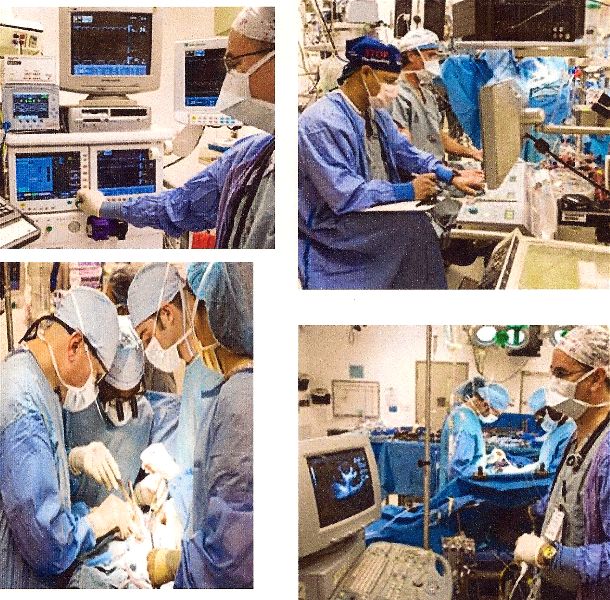MITRAL
VALVE REPAIR
The atmosphere in the operating
room can be daunting because there is a lot of equipment and sometimes a fair
amount of noise from alarms or monitors and staff preparations. Staff are dressed in operative attire with masks and gowns.
The operating room temperature may feel cold. Your anesthesiologist will give
you an oxygen mask and place additional monitoring lines. While breathing
oxygen, the anesthesiologist will administer an intravenous injection which
will put you to sleep. You will remain asleep from this point until you wake up
in the intensive care ward some hours after surgery. A tube is placed through
your mouth to connect your lungs to a ventilator and additional monitoring
lines are placed through veins in your neck. A urinary catheter is placed in
your bladder. You will then be cleaned with antiseptic solution and then
covered with drapes.
The surgery then commences
with the surgeon making an incision in the midline over your breast bone. The
surgical team usually consists of two or three surgeons who perform varying
parts of the operation as a team (similar to a pilot and copilot in an
airplane). If you also require bypass surgery, another surgeon may
simultaneously make an incision in your leg to excise a segment of leg vein for
the bypass. The breast bone is divided with a saw and the heart is exposed. The
surgeon will place tubes into the blood vessels that emerge from the heart and
connect you to a “heart-lung machine”. The heart-lung machine performs the
function of the heart and lungs while the surgeon is operating on the heart.
The surgeon then starts the heart-lung machine and then stops your heart using
special drug infusions.
With your heart stopped the
surgeon can then open your heart and operate on the heart valves. The surgeon
makes a cut into the appropriate chamber of the heart to expose the valve. The
surgeons inspect the valve and then perform the repair or replacement as
necessary. The surgeons also perform any other procedures you may require such
as bypass surgery or surgery to treat atrial
fibrillation.
Once your procedure is complete, the
surgeon closes the incisions he has made in the heart and restarts the heart beating.
The heart-lung machine is gradually weaned off and your heart resumes full
function of pumping blood round your body and lungs. The surgeon then stops any
bleeding and places chest drains through your skin which will drain any blood
from around the heart when you return to the intensive care ward. He will also
place ‘pacing wires’ through the skin which are connected to a temporary
pacemaker to increase your heart rate if required. The surgeon then closes the
chest incision using steel wires to approximate your breastbone and dissolving
sutures to close the other layers of the wound.

POST-OPERATIVE: